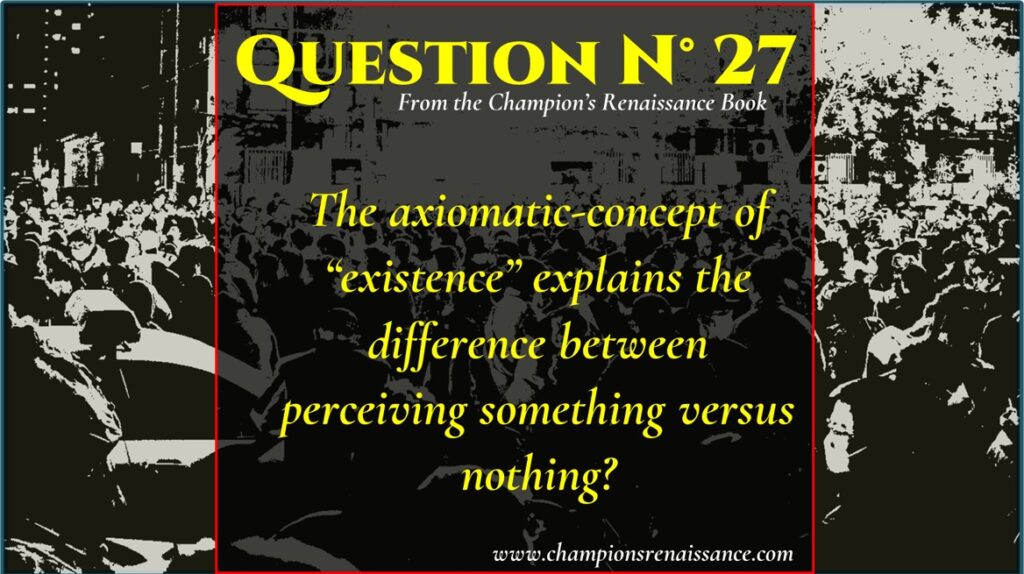
HYSTERIA
By Charles Kocian
“Step down, Xi Jinping! Step down, Communist Party!” was the claim of the crowd in many cities of China against the government with its zero-Covid policy, calling for freedom and democracy. But, is there any in the world?
Perhaps democracy is just a phenomenon of a mass hysteria? How Internet is helping to spread mass hysteria for both, rulers and ruled? Is today’s democracy a rational process or a derivative of mass hysteria? And what about TV news, front pages of newspapers, Twitter and Internet exacerbating the crowd to go right or left? An the ruled should ask themselves: are these spontaneous riots or a derivative between wars empires propaganda?
Gustav Lebon in its book The Crowd analyse the behaviour of individuals when they become part of a collective, a phenomenon that affects rulers and ruled.
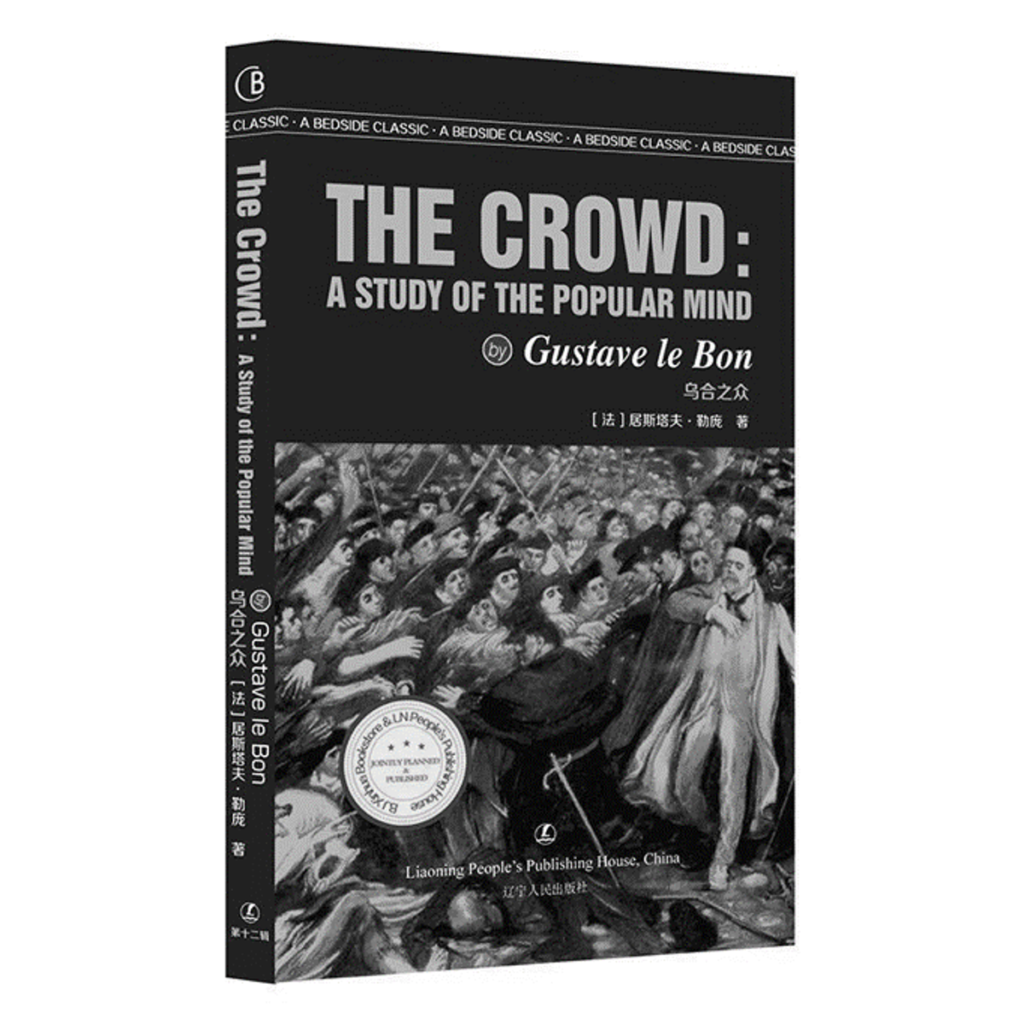
The Crowd, by Gustav Le Bon.
Le Bon said: “The masses have never thirsted after truth. Whoever can supply them with illusions is easily their master; whoever attempts to destroy their illusions is always their victim.”
But remember, a crowd can be a collective of rulers or ruled. He also said: “A crowd thinks in images, and the image itself calls up a series of other images, having no logical connection with the first… A crowd scarcely distinguishes between the subjective and the objective. It accepts as real the images invoked in its mind, though they most often have only a very distant relation with the observed facts… Crowds being only capable of thinking in images are only to be impressed by images.”
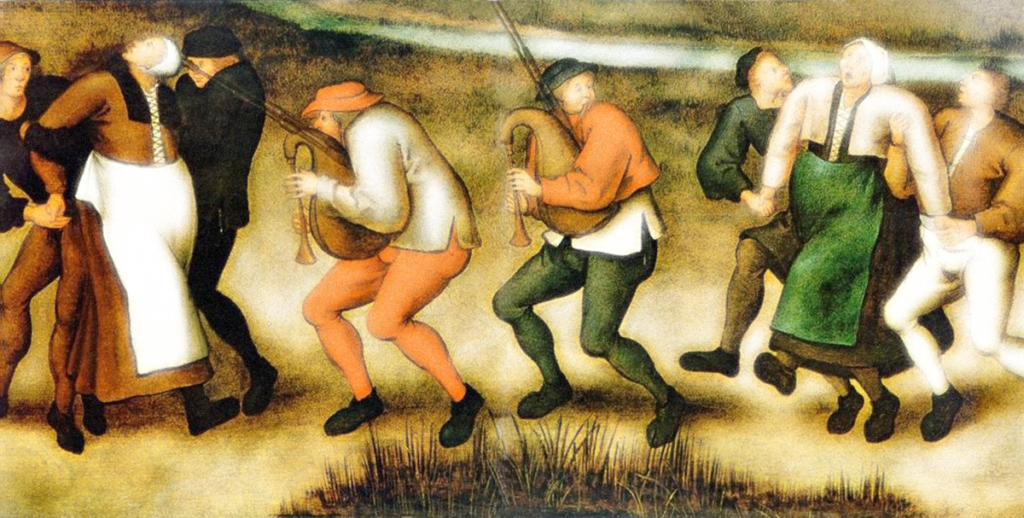
A group of women dancing in a mass hysteria pandemic in the Renaissance.
In the Renaissance it is documented many hysteric-dancing-episodes. It happened in large groups for weeks and it’s also known as “dancing mania” or “dancing plague”. It occurred in Europe between the 14th and 17th centuries. The dancing plague, were musicians accompanied the dancers, was well documented and shows that was not an isolated event. It affected thousands of people and through many centuries.
There have been many speculations about its cause, but the truth is that a mass hysteria always starts as a reaction in response to a fearful belief. One of the beliefs at those times was Satan’s possession, therefore exorcisms were often performed on dancers.
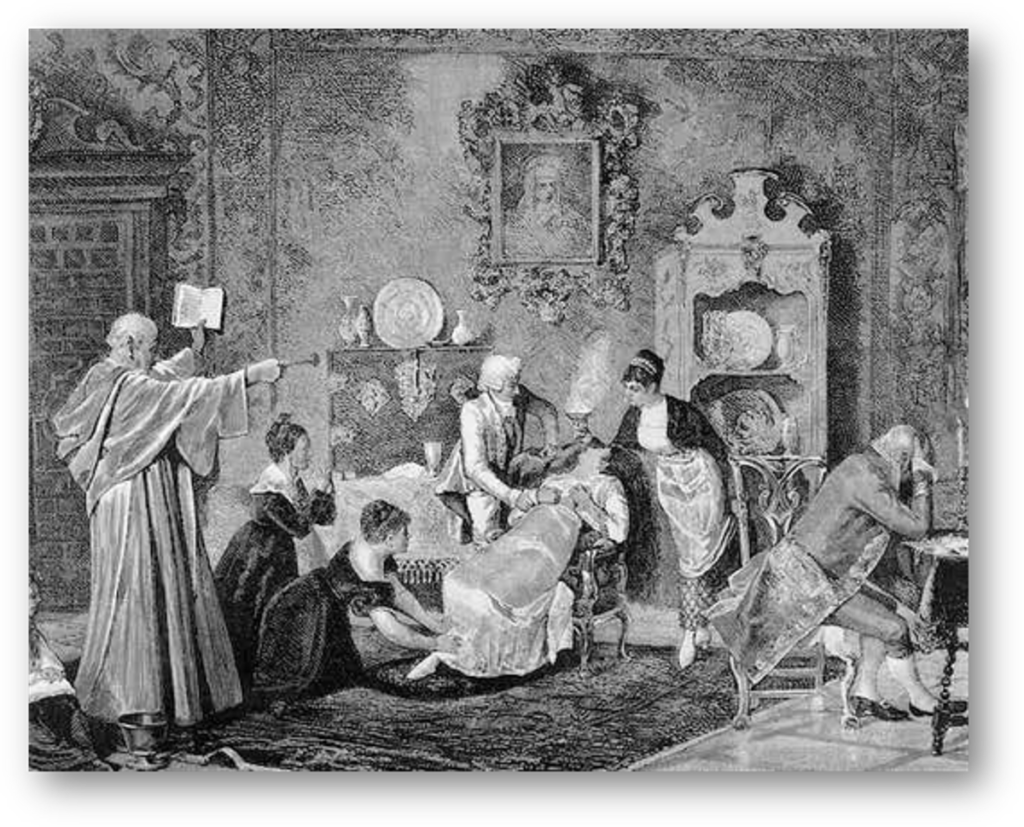
A work of exorcism in the Renaissance.
This “dancing plague” showed the hysteria of the ruled, but some early scientist like Galileo had to deal with the hysteria of the rulers, in his case, of the Inquisition. The zero Covid policy approach in China and the Inquisition have much in common, like surveillance, censorship and persecution. But sure, in China there is no exorcism.
If a collective hysteric attack or panic starts with the belief of a dangerous threat, like the fear of demons of the Catholic rulers, for them it was justified to burn people alive. But the rulers of China are not afraid of demons but Covid and perhaps something more. By the way, can a pandemic start a secular global religion like climate change? Are religious beliefs based on evidence or fantastic fears and hallucinations?

The burning of Katherine Cawches and her two daughters in the island of Guernsey.
Although today exists 7 billion religious’ people on earth, the Catholic Church is not burning witches anymore. On what are religious beliefs founded? Anthropologists have found that a religion can start with pharmacological induction. In ancient Greece hallucination drugs were used to remove inhibitions in Dionysian ritual parties. Their hallucinations conducted them to the belief of a superior existence than the material universe. First it was the Orphic religion, then it was the Pythagoras cult, and finally Plato built its philosophy who anyone can grasp in the Allegory of the Cavern. Plato’s philosophy was later inherited by Christianity. This is why mystic people believe that there are two kinds of existence, and therefore, two kinds of self: the body and the soul, so the idea of reincarnation was born.

Plato’s cavern allegory.
In India powerful narcotic plants helped to produce religious hallucinations. One of these drugs was soma or “amanita muscaria”, a large mushroom producing “an exalted state to be able to talk to the gods,” as their users says. Some scholars believe that it was used since the Bronze Age. In that age the pagan Celtic religion used drug-plants in the “Wicker Man” mass ritual, were they burned men and animals alive.
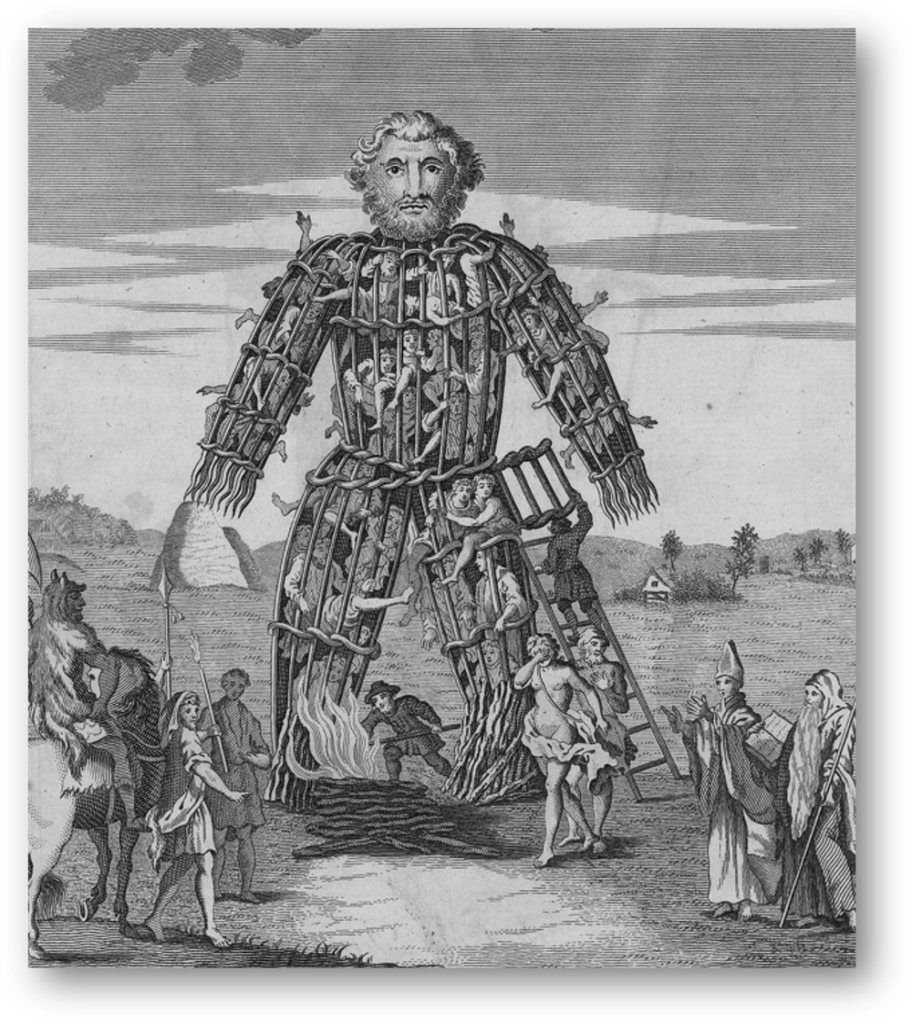
Wicker man ritual of pagan Celtic religion.
Today, TV news and social media can produce collective hysteria and act as a hallucinogen drug that can change perception, mood and critical thinking skills of rulers and ruled. Slowly but surely, intense media coverage has proven that to exacerbate breaking news (a common practice to sell more or have more rating) can produce collective panic attacks.

Mass media hysteria.
So, what is hysteria?
In ancient Greek, women constant mood swings were referred as “hysteria”, being described this female disease in the Hippocratic Corpus. The Greeks called almost all female complaints hysteria and believed the cause of its maladies was a wandering uterus.
But hysteria, objectively speaking, is a person with ungovernable emotional excess. It may be cause by perceiving another reality derived from hallucinations or by breaking news’ propaganda. Some of the symptoms of female hysteria were described as the shortness of breath, anxiety, insomnia and infertility among others.
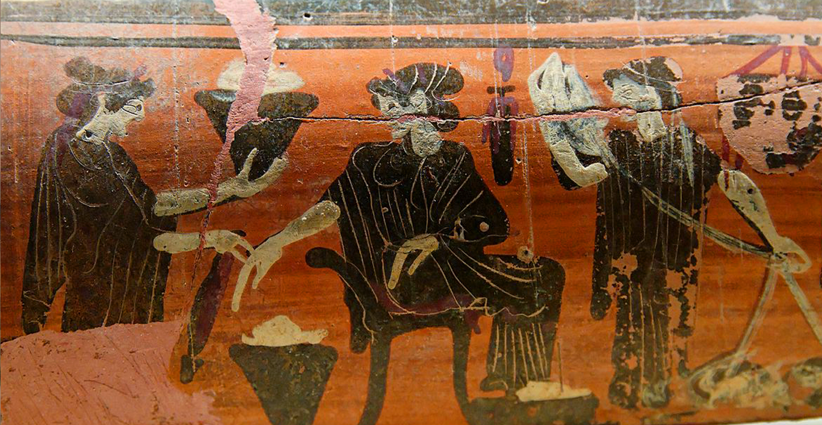
Women in the Gynaeceum preparing to cure female hysteria.
But the Greek beliefs lasted until the Renaissance and beyond. In the 16th and 17th centuries, female hysteria was still believed to be due to sexual deprivation, or by the tendency of the uterus to wander.
One of the experts of the Renaissance recommended masturbation to lascivious widows, but the best advice was to find them a husband. A strong man would give her uterus a vigorous massage in each sexual intercourse to alleviate its frenzy. Some men still today say that “what hysterical woman needs is a penis” and they think it cures the symptom.
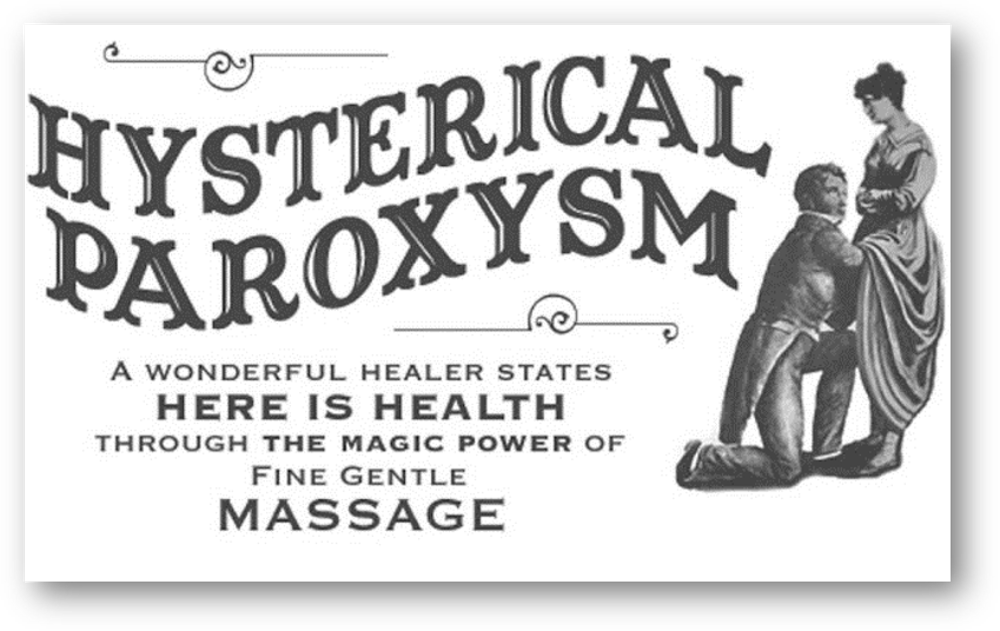
Advertising picture of a doctor masturbating a woman to cure female hysteria.
Also, in the XIX century doctors treated woman by genital massage to induce “hysterical paroxysm” or in common words: orgasm. Hysteria was supposed to be a build-up of fluid in the woman’s womb, therefore doctors assumed that, since men ejaculated and felt better, it was reasonable to conclude that the same could apply to women and end the hysteric disease.
Female hysteria was a once-common medical diagnosis exclusively for women. Today is no longer recognized by medical authorities as a medical disorder, but in history records of mass hysteria is an overwhelmingly female phenomenon, especially in adolescent women.

Mass hysteria panic in the crash of Wall Street, 1929.
Titles like “Wall Street Hysteria” or “Stock market crash of 1929 left people ‘hysterical with fear’” can easily be find in Internet. So, the markets are also victims of collective hysteria attacks? In the stock market language, its common to hear the expression “the market sentiment.” This shows that Wall Street stockholders can be easily manipulated by the Wolfs of Wall Street. These criminals can start a panic stampede with rumours and get rich from buying stock options on the downside, known as “puts”.
CONCLUSION
Although hysteria exists, and “existence” is an objective axiom-concept, existence can exist in two very different ways. One way, is the existence of an imaginary hallucinated world, a false or fantastic existence derived from mass hysteria, propaganda, fake news, psychedelics drugs or improper philosophies like Platonism. Plato duplicated the material universe and invented a supernatural invisible world, a kind of consciousness without existence that, Plato said, created the material reality and he imagined all that without any evidence. In resume, the fantastic existence exists, it is subjective and it is under the laws of any whim or imagination, like that existence we have at night while we sleep and dream with close eyes.
The other existence is the objective existence we know it’s real when we open our eyes in the morning. This natural beautiful existence is given and absolute and reign us all with its universal laws. We know it exists because we perceive it with our senses, and we can learn more about it using our own mind, making our own independent experiments, of course, using the scientific method.
Although existence exists, it is dangerous for an individual to confound fantasies with realities, subjective narratives with objective evidence, and this applies for rulers and ruled of any civilization.
Now answer to question 27.
QUESTION N° 27
The axiomatic-concept of existence explains the difference between perceiving something versus nothing.
a) True
b) False
The answer is: true, but be alert because perception can be tricky.
Leave your comments here.

